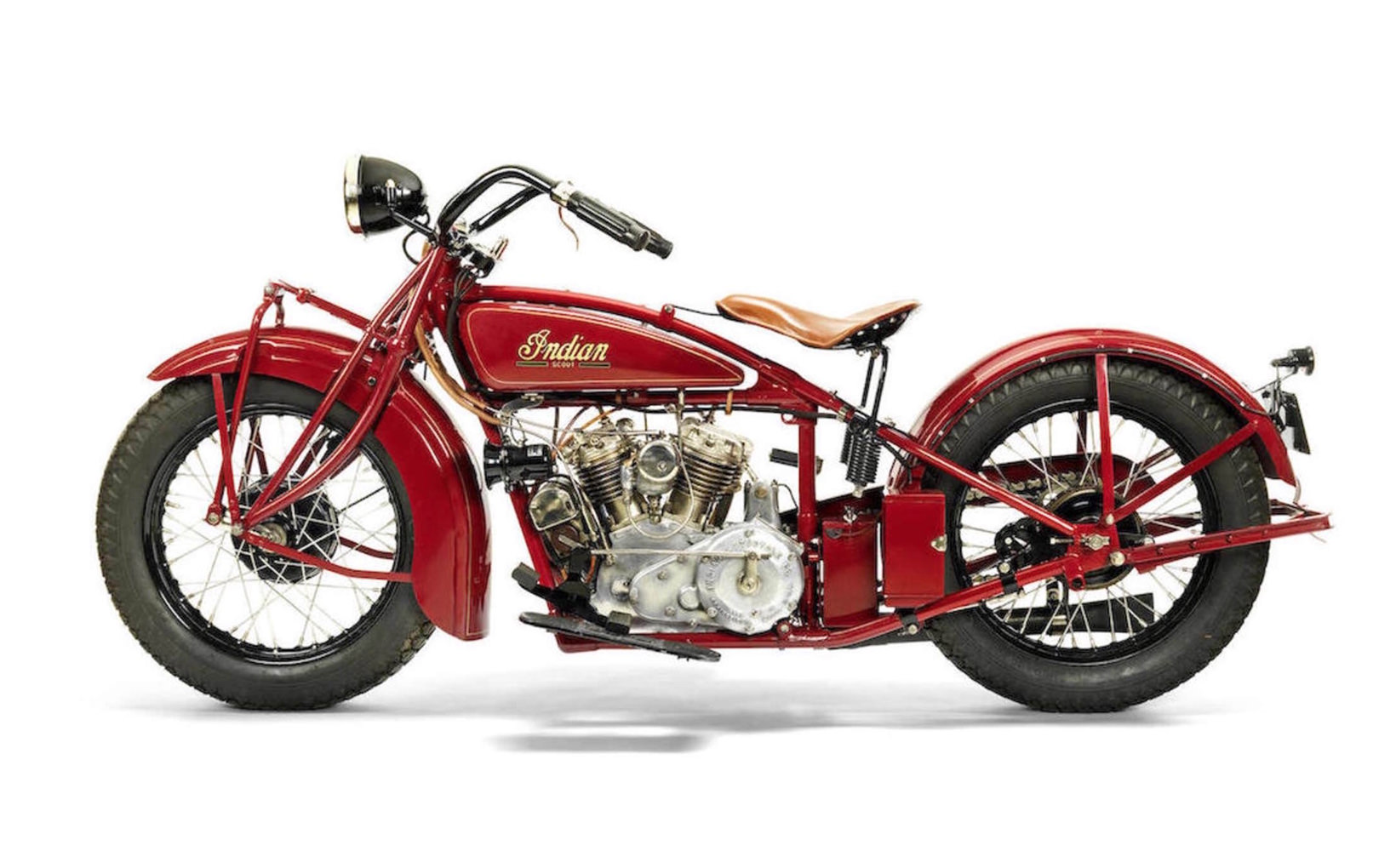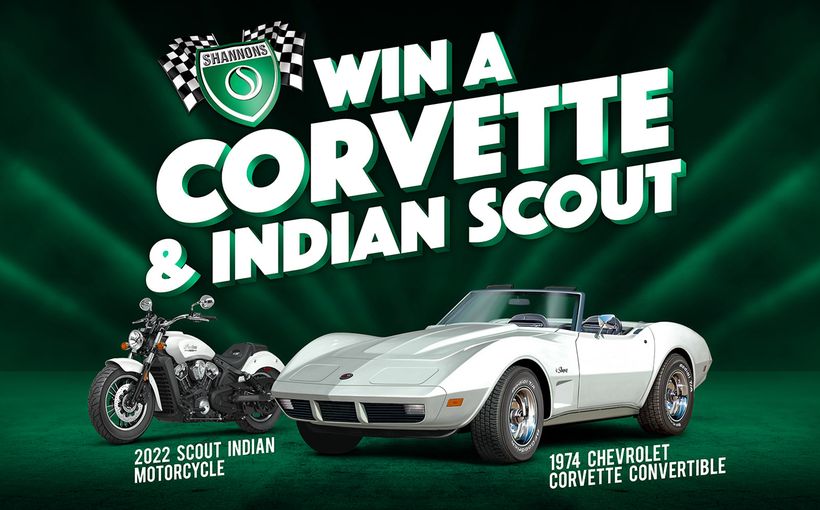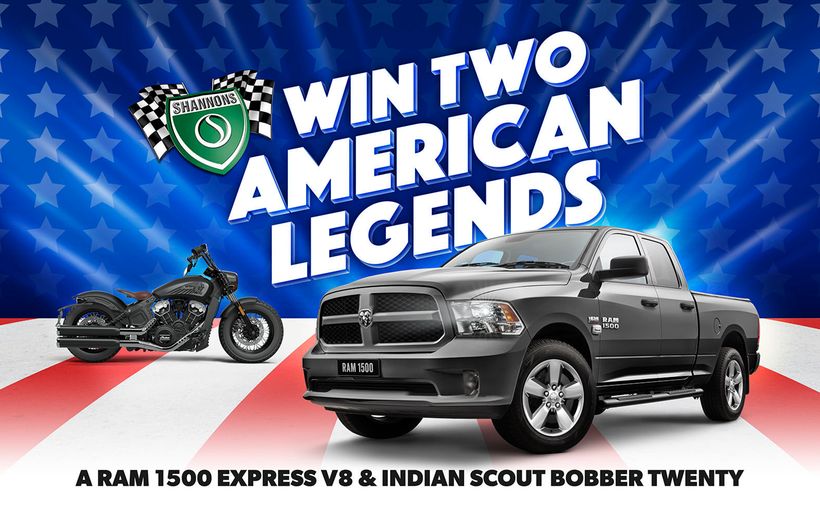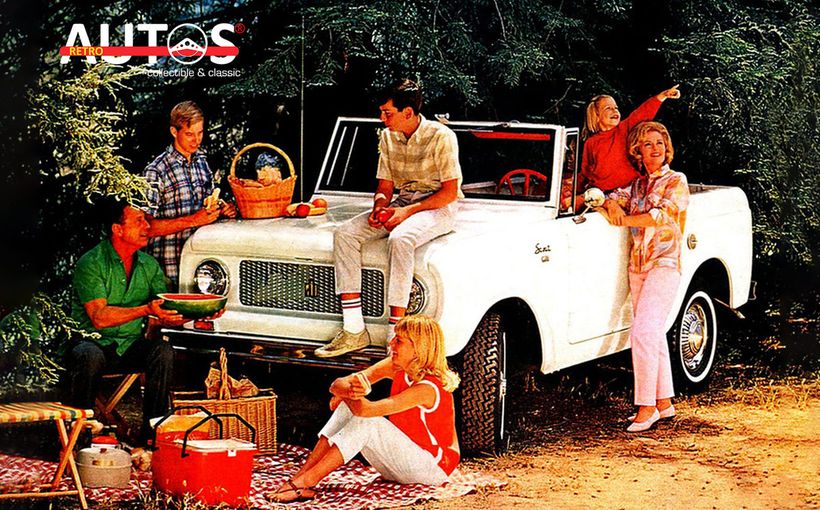Indian Scout: 190mph! The world’s fastest Indian

Since its creation more than a century ago, the legendary Scout has been an icon of America’s first motorcycle company. It was arguably the first mass-produced sports bike and is steeped in historical achievements, including a world land speed record that still stands today.
That was set in 1967 on the Bonneville salt flats in Utah by humble New Zealander Burt Munro, who rode his personally modified 1920 Scout to an astounding under-1000cc motorcycle class record of 183.59mph (295.453km/h).
To qualify for that history-making run, Munro achieved a one-way pass of 190.07mph (305.89km/h). That remains the highest speed officially recorded on an Indian; an achievement immortalised on the big screen in the 2005 movie The World’s Fastest Indian starring Anthony Hopkins.
Munro was a spritely 68 years young at the time and what he lacked in dollars he more than made up for with self-taught mechanical skills and can-do attitude. His modified 1920 Scout, which Munro bought new when in his early 20s, was a masterclass in DIY engineering, with the V-twin engine bored-out from its original 600cc to 950cc along with fully-enclosed streamlined bodywork, a triple-chain drive system and numerous other tweaks.


The fact that the cash-strapped Munro was able to squeeze more than 190mph from a then 47-year-old motorcycle, which had an original top speed of only 55mph (89km/h), is a testament to the inherent and enduring sporting qualities of the original Indian Scout.
It rivalled the larger Chief as Indian’s most important model. Indeed, the 101 Scout produced from 1928 to 1931 is widely revered as the best motorcycle that the original Indian company ever made, which highlights the respect it commands in motorcycle folklore.
During the tumultuous century since the original Scout was released, the Indian brand survived a precarious journey under a variety of owners before being rescued by Polaris Industries in 2011. The Scout, reborn in 2015, remains an inspirational icon of Indian’s early years, when it established its credentials for cutting-edge technology, high build quality and exhilarating performance.

Image: Indian
Heritage behind the legend
Bicycle racer George Hendee established the Hendee Manufacturing Company in 1889 in Springfield, Massachusetts to produce bicycles. Business flourished and by 1897 Hendee was producing 4,000 per year, many of which were exported under a distinctive brand name - American Indian.
“Native American phrases and imagery were immensely popular at the time, both in the United States and abroad, thanks in large part to Buffalo Bill’s Wild West Show, which is ironic, given the United States government’s wars against America’s indigenous people,” notes Darwin Holmstrom in his comprehensive history Indian Motorcycle – America’s First Motorcycle Company.
“The conflict was, of course, not a widely publicised fact and people around the world entertained romantic notions of native Americans as noble savages living freely in the great North American wilderness, making the choice of the name (later shortened to Indian) an excellent one from a marketing perspective.”
The end of the 19th century saw rapid development of four-wheeled ‘horseless carriages’ or ‘automobiles’ powered by gasoline-fuelled internal combustion engines, so it was only logical that the same ground-breaking technology was applied to bicycles to create the ‘motocycle’ (the term ‘moto’ rather than ‘motor’ was commonly used to describe them in the early days).
George Hendee was at the forefront of this exciting transport revolution and in 1901 teamed up with apprentice watchmaker and fellow bicycle racer Oscar Hedstrom to establish America’s first mainstream motorcycle manufacturer under the Indian brand name. The Swedish immigrant had already shown great flair for mechanical engineering, having developed a ‘motocycle’ using a De Dion-Bouton single-cylinder gasoline engine.
Hedstrom set to work on prototypes which would evolve into the first Indian motorcycle. It was effectively a pushbike with an engine attached, in this case an air-cooled 1.75hp single manufactured under license by Aurora in Illinois, with chain drive to the rear wheel.

Image: Indian
The first Indian went on public sale in 1902, a year before William S. Harley and the Davidson brothers Arthur and Walter started producing motorcycles in Milwaukee, Wisconsin which would soon become Indian’s nemesis.
Indian’s sales took off while also achieving great success in all forms of powered two-wheeled competition, earning a reputation for speed, ruggedness and reliability. The company also created Indian’s first V-twin engine; strictly for competition use at first but a significant development in regards to the brand’s future model development.
In 1904 the deep red colour that would define all Indian motorcycles was introduced and in 1906, with sales booming, production expanded into a massive new factory in Springfield which allowed in-house manufacture of its engines.
In 1907 Indian launched its first mass-production V-twin, which although using a crude intake-over-exhaust F-head design with vacuum-operated inlet valves was a huge leap ahead of its rivals, with a 39cid/640cc displacement and 42-degree vee-angle. By then Indian was America’s leading motorcycle manufacturer and one of the world’s premier brands.
Evidence of its pre-eminence was Indian’s clean-sweep of the 1911 Isle of Man Senior Tourist Trophy (TT) when works riders finished first, second and third. The second-placed rider, a young Irish engineer named Charles B. Franklin, was destined to play a pivotal role in Indian – and more specifically Scout - history.

Image: The Bicycling World and Motorcycle Review
In 1913 annual production hit a record 32,000 units, making Indian the largest motorcycle manufacturer in the world. That record-setting production number represented nearly 50 per cent of all motorcycles sold in the US alone that year.
And, on that high note, Oscar Hedstrom left the company he had co-founded, replaced in the chief engineering role by qualified mechanical engineer and accomplished racer Charles B. Franklin; the same Irish immigrant who finished second for Indian in the Isle of Man TT.
In 1916 Indian released the iconic Charles Gustafson-designed ‘Powerplus’ V-twin; again a 42-degree vee-angle but with a new more efficient side-valve design, removable heads and displacement increased to 61cid/1000cc. With its unprecedented 16hp output, the Powerplus proved highly successful in civilian, race and (soon) military applications.
Indian’s co-founder George Hendee retired in 1916, the year before America entered WW1. The company committed most of its 1917-18 Powerplus model production to US government military contracts, which unwisely starved its dealer network of inventory and forced many of them to switch their allegiances to rival brands, namely Harley-Davidson. As a result, Indian lost US market leadership to its Milwaukee rival and never regained it.
The departure of Hendee and Hedstrom was the beginning of a long downward spiral for the original Indian motorcycle company. Profits were squandered on unsuccessful side ventures instead of being reinvested in the core business of motorcycle design and manufacture, as they had been under its founding fathers.
Indian’s product quality and customer service were also being compromised by the board’s incompetent management. Some fresh models were clearly needed to spark renewed buyer interest, which was the catalyst for creation of two models that to this day are Indian’s most iconic: the Chief heavyweight cruiser and its smaller, sportier sibling - the Scout.

Image: Indian
Scout (1920-1927)
Charles B. Franklin came up with a daring new concept that would exploit the handling and power-to-weight advantages of a lighter and more agile motorcycle than any previous offering. It was clearly designed to appeal to hardcore enthusiasts wanting sporty performance, yet easy enough for a novice to ride with confidence.
It was a genuine breakthrough in motorcycle design, starting with a then-radical frame with twin leading down-tubes that cradled the engine in an extremely rigid structure that was a key component in the Scout’s sublime handling.
Its 36cid/596cc V-twin was a work of innovative art, with the engine, three-speed gearbox and primary drive connected by helical-cut gears rather than the usual chain drive and a pair of camshafts to operate its four side-valves (the larger Powerplus only had a single camshaft) allowed much greater flexibility in valve timing to extract more power.
Holmstrom: “The Scout motor produced only 11 horsepower, compared to the 16 horsepower generated by the Powerplus, but the Scout had a wet weight of just 340 pounds (154kg), meaning it could get up and move. The little Scout offered levels of engine performance that made it a genuine competitor to the largest machines offered by rivals Harley-Davidson and Excelsior-Henderson, packaged in a chassis that could run circles around the competition.”
In 1927 Indian released a more powerful Scout with a bored-out version of its V-twin producing a 45cid (almost 750cc) displacement. This was in direct response to not only Excelsior-Henderson’s new 45cid Super-X model but also to maximise the Scout’s potential in a new AMA racing class with a 45cid limit. The Scout 45 could do 75mph-plus straight off the showroom floor, generating strong sales across the country and re-energising the dealer network.

Image: https://www.autoevolution.com/
101 Scout (1928-1931)
The following year Indian released what many enthusiasts cherish as the finest motorcycle produced by the original Indian factory - the 101 Scout.
Its creator Charles B. Franklin refined what was already a sublime performance package by inserting the Scout’s powerful 45cid V-twin and three-speed gearbox into a new frame with a lower seat height, increased front fork rake and a longer wheelbase to enhance stability. The engine was also mounted further forward in the frame to place more weight on the front wheel to sharpen steering response.
The 101 Scout went on a rampage in 1928, winning every US national championship race and setting many new dirt-track, board-track and hill-climb records along the way. It was also popular with stunt riders, who relied on its light weight and superb balance when performing high-speed ‘Wall of Death’ or ‘Silodrome’ shows in vertical-walled velodromes shaped like silos which were big crowd-pullers at the time.
Sadly, Charles B. Franklin was not able to continue his winning ways with Indian, as he was forced into retirement due to ill health in 1930 and died two years later when he was only 46. His departure was a significant loss to Indian’s engineering leadership.

Image: https://www.yesterdays.nl/
Standard Scout (1932-1937)
The Great Depression of 1929, which lasted for almost a decade, claimed one of the big three of American motorcycling when Excelsior-Henderson went bust in 1931. Indian would surely have followed if not rescued by the du Pont family in 1929, with brothers E. Paul and Francis du Pont buying a controlling interest and joining the board of directors with E. Paul as chairman.
Fortunately, E. Paul was not only a qualified engineer and pragmatic businessman but also a keen motorcyclist with a personal stable of Indians, so he immediately instilled a level of enthusiasm and confidence which had been missing since Hendee’s retirement.
However, the new management team made a stunning misjudgement. Driven by a pressing need to reduce production costs and increase profit margins on each sale, Indian adopted a generic frame which could be shared by the new-for-1932 V-twin models.
So, the new Standard Scout (aka 203 Scout) was effectively the Scout engine in a heavier and bulkier Chief frame. Both models shared many other components and near-identical bodywork, defined by stylish new saddle-style petrol tanks and skirted fenders which over time would define the classic Indian look. However, the 101 Scout’s unique handling and agility had been lost and its replacement was derided by many dealers and afficionados as a cynical exercise in badge-engineering.

Image: Indian
Pony Scout (1932-1941)
Indian attempted to appease customers mourning the loss of its 101 Scout by launching the lower-priced Pony Scout, which was essentially a modernised twin-cylinder version of the low-cost single-cylinder Prince model shelved in the previous decade.
It featured a new 31cid/500cc V-twin plus an unusual ‘Keystone’ frame design that incorporated the engine as a stressed frame-member. It remained in production for a decade, although though sales were always modest.
The harsh reality for Indian was that trying to find buyers during The Depression’s darkest days was like searching for needles in haystacks. The company’s share price had collapsed, the factory’s output had slowed to a trickle and management was staring down the barrel of bankruptcy. Somehow, Indian managed to keep its doors open - but only just.
It released a new model in 1934 called the Motoplane, which was really a Pony Scout with its displacement bored out to 45cid. So, hardly a ‘new’ model and by most accounts too much engine for the light frame, but a useful stop-gap that was cheap to produce and offered more performance than the Pony Scout. Its name was later changed to Junior Scout.

Image: Indian
Sport Scout (1934-1942)
The elimination of frame tubes under the engine using the Keystone frame was pivotal in the new Sport Scout weighing far less than the unloved Standard Scout. Handling was also greatly improved by the new frame design, as its increased ground clearance allowed more lean and therefore higher cornering speeds.
Along with new girder-style forks and other improvements, the Sport Scout proved as effective in competition as the 101 Scout. This was helped by the AMA creating a new cost-conscious racing class for road-legal motorcycles, for which it was ideally suited. A specially-tuned Sport Scout won the first Daytona 200 held in 1937.
The late 1930s saw another slump in US motorcycle sales, which ensured Indian did not have the resources to create a more modern overhead-valve cylinder head to match Harley-Davidson’s version released in 1936.
The more compact OHV combustion chamber optimised the increasing use of tetraethyl lead or ‘ethyl’ in pump gasoline, which allowed higher compression ratios without detonation and subsequent power increases. Being stuck with its side-valve design would haunt Indian during its final decade as a motorcycle manufacturer.
The Sport Scout and Pony/Junior Scout continued in production with mostly cosmetic changes, which in 1940 included new full-skirted fenders and enclosed drive-chains created by stylist G. Briggs Weaver who was heavily influenced by the French art deco movement. He created a gracefully streamlined look across the range that would characterise the marque until civilian production was interrupted in 1941 due to WW2.

Image: https://www.mecum.com/
Scouts goes to war
The most common Indian for military use was the 741, which was a hybrid of the 31cid/500cc side-valve V-twin Pony Scout and Standard Scout, equipped with leather saddlebags, ammunition boxes and other military hardware. More than 30,000 were sold, primarily to British and Commonwealth forces and other US allies.
The 640 was a military version of the 45cid/750cc Sport Scout tailored for the US military, which generally preferred larger engines. However, Indian only sold 2,500 640s to the US military compared to tens of thousands of Harley-Davidson’s WLA models.
Reading between the lines, this probably had more to do with political contacts and favouritisms in Washington DC than the obvious performance and handling merits of the Sport Scout-based 640.

Image: https://www.yesterdays.nl/
Post-war Scouts: a sad end
Following the return to peace-time, a clearly fatigued E. Paul du Pont wanted to get out of the motorcycle business. In 1945 a group of investors headed by young and wealthy industrialist Ralph B. Rogers purchased a controlling interest in Indian and the du Ponts formally handed over operations of a company deep in debt with only outdated pre-war machinery to sell.
Indian’s civilian production restarted in 1946 with a mildly-updated Chief, but Rogers knew that Indian’s side-valve technology was living on borrowed time. To reinvent the brand, he planned an all-new line of lightweight single-cylinder and vertical-twins, similar to numerous UK imports from Royal Enfield, Norton, Triumph, BSA and others which were flooding the US market. GIs stationed in Europe had ridden many of these marques during the war and, like MG sports cars, had developed an affection for them.
It was an ambitious plan, based on a new and untested ‘modular’ engine concept designed to create a range of compact OHV engines using common castings and components. They were also equipped with modern clutch and gearshift controls like the British imports. The first of these modular Indians comprised a 220cc single called the Arrow and a 440cc twin called - the Scout.

Image: Indian
The return of the Scout was not to be a happy one, though. The launch was delayed for almost a year due to long delays in supply of components, which were not only late but of poor quality. As a result, when the all-new Indians were finally launched in 1949, they were crippled by countless design and quality control problems that terminally damaged Indian’s reputation.
Some desperate attempts were made to keep the embattled factory open, but the humiliating failure of the lightweights made it impossible. In December 1952, motorcycle production ceased at the Springfield plant, with the final examples rolling out in early 1953.
In the decades that followed, the Indian trademark passed through numerous corporate owners, with some making well-meaning attempts to re-establish authentic and sustainable US production. However, each venture was short-lived, until a true saviour finally appeared.

Image: Indian
Scout (2015-present)
In 2011, Polaris Industries, a huge US manufacturer of all-terrain vehicles, acquired the rights to the Indian name and assets with a credible plan to finally restore the famous American motorcycle marque to its former glory.
What made Polaris uniquely qualified was its successful creation from scratch of an all-new range of heavyweight cruiser motorcycles under the Victory nameplate, launched in 1998. In fact, the highly-regarded Victory brand was the first new American-made motorcycle produced by a major US manufacturer since Indian’s demise in 1953.
The key principles Polaris applied from the start were that Victory and Indian had to be completely separate brands, which shared no common parts apart from minor bolts and fasteners. It also had to be respectful of the Indian marque in every element of its design, in following the most likely evolutionary path in model development had the original company remained in business.
In 2013 Polaris celebrated the official resurrection of Indian, by releasing a range of Chiefs powered by the company’s formidable 111cid/1.8-litre ‘Thunder Stroke’ air-cooled pushrod V-twin.

Image: Indian
2015 saw the long-awaited return of the Scout, which true to tradition had a sleek low-slung profile, low seat height, good ground clearance and powered by a smaller and lighter engine for greater agility; in this case a unique 69cid/1133cc liquid-cooled V-twin with DOHC and four valves per cylinder. The frame design, comprising rigid aluminium castings, was also true to the marque’s tradition by using the engine as a stressed member.
In 2016 Indian added a lower-priced version called the Scout Sixty, which was essentially the same as the Scout but powered by a smaller 60cid/990cc engine. Since then, Indian has released more variants including the minimalist 69cid Scout Bobber and in 2020 two models that paid homage to the Scout’s proud heritage; the 100th Anniversary Edition (limited to 750 units worldwide) and the Scout Bobber Twenty in honour of the original 1920 Scout.
So, after more than a century since its creation, the Indian Scout - and indeed Indian itself - appears to have a secure and exciting future. No doubt the Scout’s creator, Charles B. Franklin, would be smiling down from motorcycle heaven.








